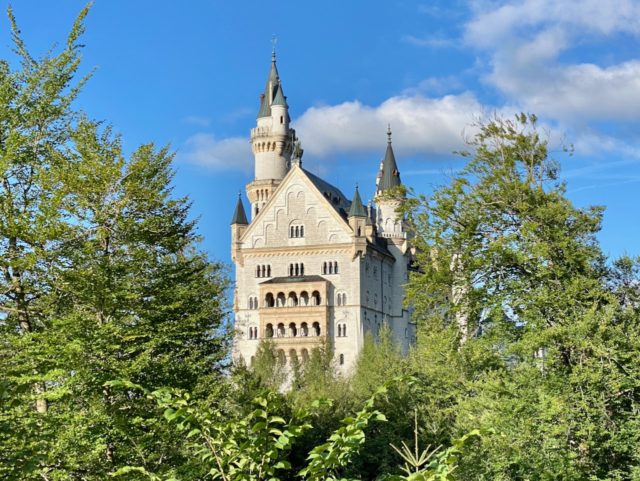
A tour of King Ludwig II’s Castles
Table of Contents
The beautiful Alpine borderlands of southern Bavaria is home to some of Germany’s most loved historic attractions. The forested mountains, with their craggy ridges resembling the backs of dragons, lush valleys and glistening lakes, make for picture perfect scenery. Set against this gorgeous backdrop are the castles of King Ludwig II. ‘Mad’ King Ludwig lived in the 19th century but his legacy of fairy-tale monuments continues to delight visitors till this day. The King Ludwig II castles I’ve visited are Neuschwanstein, Hohenschwangau and Linderhof, which are near one another about a two-hour drive south of Munich. His final masterpiece, Herrenchiemsee Palace, which I’ve yet to visit, is located southeast of Munich.

Neuschwanstein, Hohenschwangau and Linderhof can quite easily be visited in a day but I recommend taking more time to explore the surrounding area. Besides the beautiful Alpine scenery, there are other small towns and historic attractions which are more than worth a visit. I recommend hiring a car to visit the castles and discover other places of interest on a 2-3 day road trip. Here’s what you can see on a self-drive tour of King Ludwig II’s castles south of Munich:
Neuschwanstein
The epitome of over-the-top 19th century Romanticism, it’s easy to see why Neuschwanstein is the most famous of King Kudwig II’s castles. The design of Neuschwanstein, with its many turrets and lavish interior, was inspired by medieval castles and Wagner’s operas – a combination that romanticises the Middle Ages. Built on the foundation of twin medieval castles, Neuschwanstein took 17 years to build and was completed in 1886.
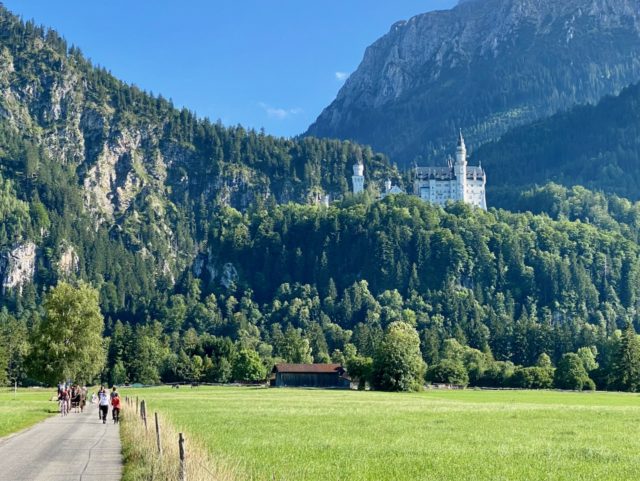
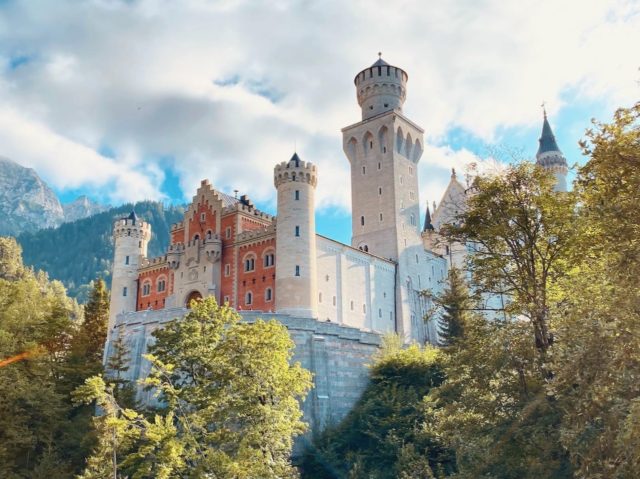
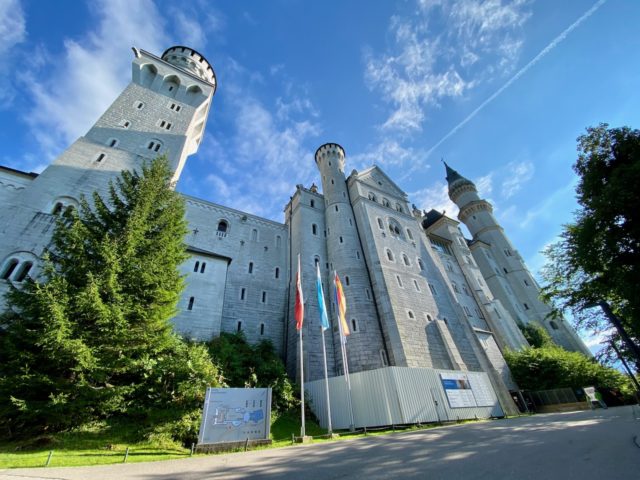
The best viewpoints of Neuschwanstein Castle
Neuschwanstein is best known for its iconic views from various spots higher in the surrounding mountains. Getting to these viewpoints requires a hike, which can be quite steep in places. Arguably the best view is from the Marienbrücke (Mary’s Bridge). It’s a pretty narrow bridge and it’s very popular so I suggest getting there early. Follow the purple-marked trail from the castle. If you’re up for a longer hike, continue past the Marienbrücke – the road turns into a dirt trail – and you’ll soon find several viewpoints which are a lot quieter but which offer amazing views.
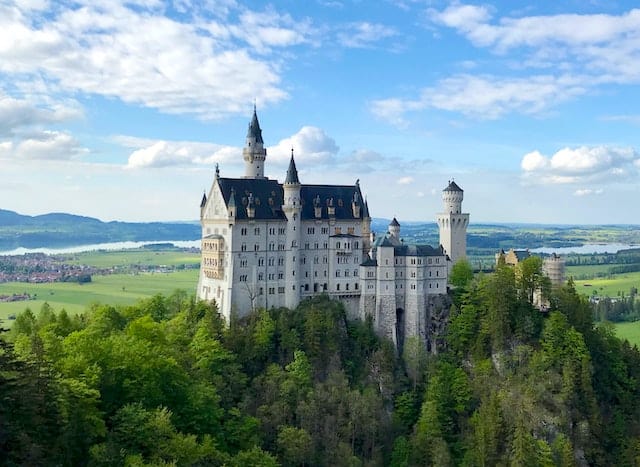
In the valley, there are also various spots where you can enjoy a beautiful view of the castle. Follow the Schlossstrasse to find these spots.
Practical info
Neuschwanstein is located about a two-hour drive from Munich, making a day trip possible. If you don’t have a car, I recommend joining a full-day tour that includes transportation and a guided tour of the castle. Note that it’s only possible to tour the castle as part of a guided (group) tour. You can also combine Neuschwanstein with Linderhof in one tour. Either way, I recommend booking your spot on a guided tour way in advance to avoid disappointment. There’s only a limited number of tickets sold at the ticket office each day and these tend to sell out very fast.
Hohenschwangau Castle
Situated atop a low hill not far from Neuschwanstein, Hohenschwangau was built by King Maximilian II, Ludwig’s father, in neo-Gothic style and was completed in 1836. The young Ludwig spent much of his childhood here. From his bedroom window, he could see the ruins of the twin medieval castles, and some time later, the construction of Neuschwanstein on the same spot.
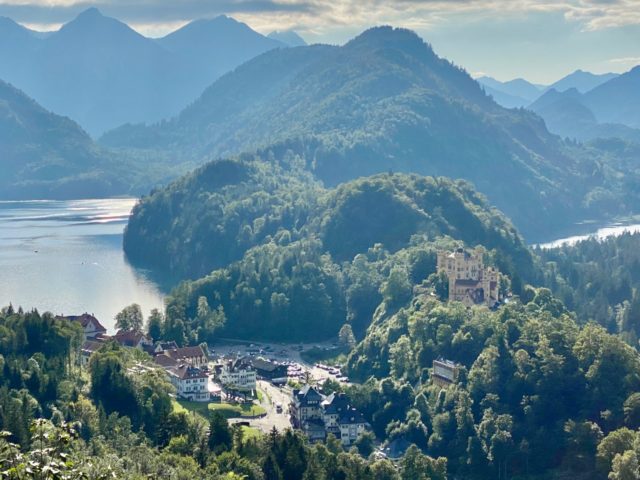
Upon its completion, Hohenschwangau Castle became the summer residence of the Bavarian royal family, who also spent time here when they went on their hunting trips. The interior of the castle is lavish, with painted walls, elaborate decorative ceilings and exotic furnishings.
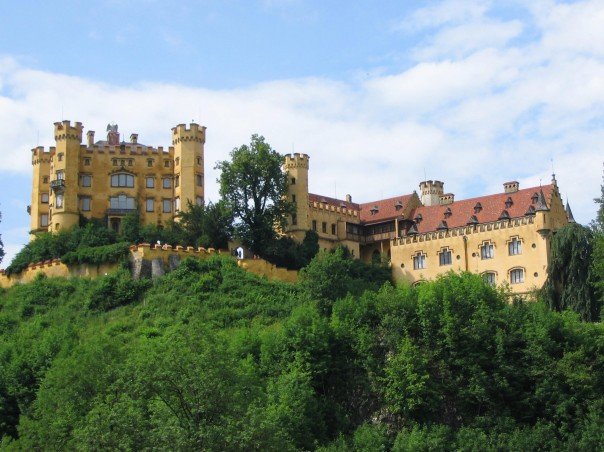
Schloss Linderhof
Linderhof Palace may be the smallest of King Ludwig II’s palaces but its spectacular location, surrounded by mountains, exquisite gardens and lush forests, makes it my favourite! Furthermore, in addition to the palace itself, there are various smaller structures on the palace grounds that are simply awe-inspiring. King Ludwig II lived much of his last years in Linderhof, surrounded by fantastical, exotic interiors.
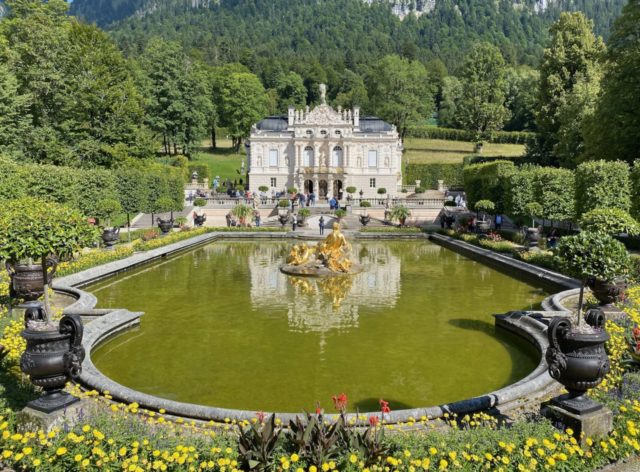
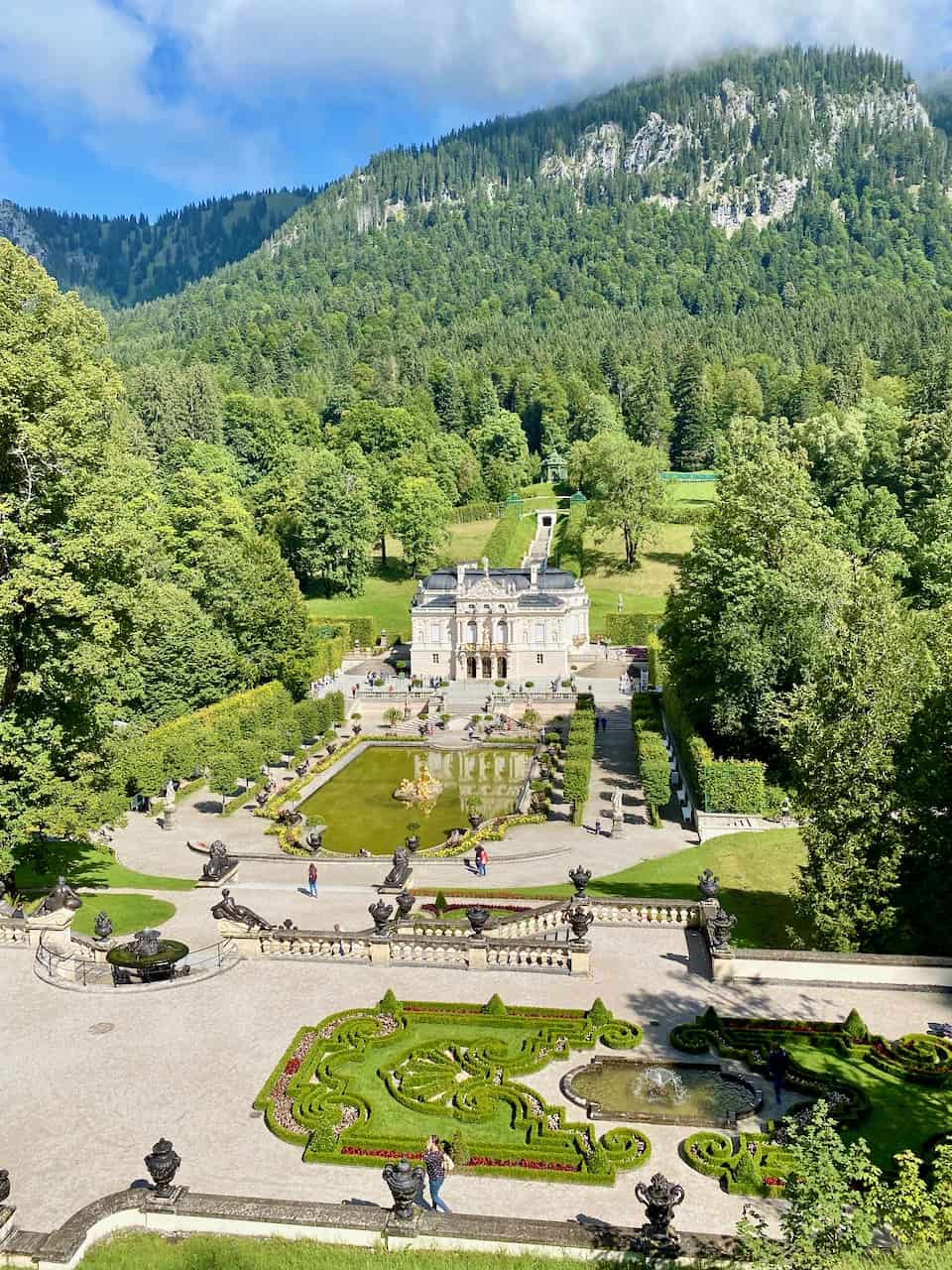
Built between 1863 and 1886, Linderhof was designed in rococo style and heavily influenced by Versailles in France. It even has a smaller version of Versailles’ famous Hall of Mirrors. Some of the highlights of Linderhof include the palace (Schloss) itself, the beautiful gardens, terraces and fountains, the Venus Grotto, the Moorish Kiosk and the Moroccan House.
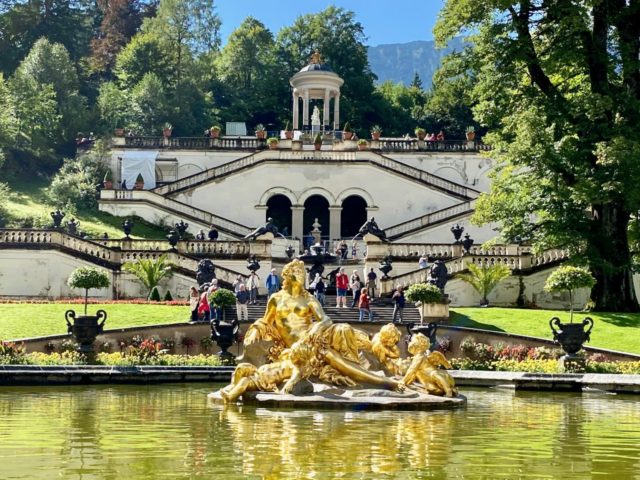
Between Neuschwanstein and Linderhof
Linderhof is approximately an hour’s drive from Neuschwanstein. There are two routes you can follow: a slightly shorter route through Austria, or the northern route that stays within Germany. If you opt for the northern route, there are several places to visit along the way:
Wieskirche or Church of Wies
Wieskirche is an important pilgrimage church built in the 18th century. A UNESCO World Heritage, Wieskirche is an oval-shaped church in rococo style. Set in a beautiful Alpine valley, the church boasts an exuberant interior with elaborate frescoes and embellishments.
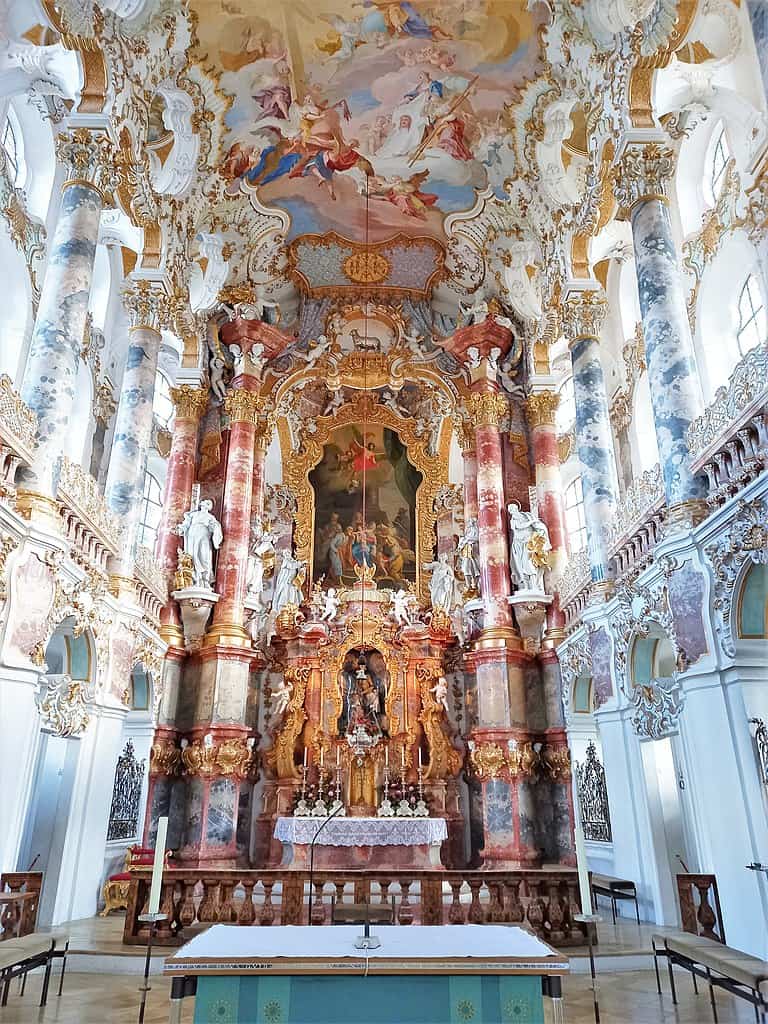
Oberammergau
Oberammergau is a historic town that’s famous for two things: woodcarvings and its The Passion plays (that have been performed since 1634). It’s a lovely place for a stroll and a meal. There are also numerous shops and woodcarving workshops to visit.
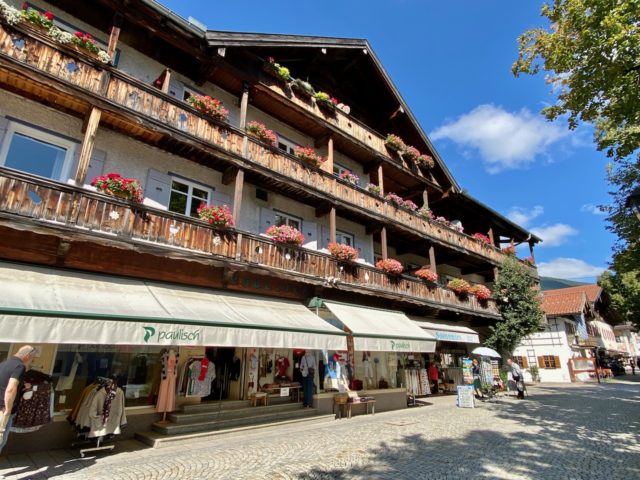
For something a bit more exciting, check out the Alpine Coaster, located just outside Oberammergau. This is the longest all-weather toboggan run in the world. The 2.6km track starts at 1,258m high and snakes its way down the mountain. More info here.
Ettal Abbey
Not too far from Oberammergau lies the Ettal Abbey, an impressive structure and one of the largest Benedictine monasteries in Europe. Ettal Abbey was founded in the 14th century. A fire destroyed much of the abbey and church in 1744, but it was rebuilt in a lavish Baroque style. The church, with its spectacular dome, is a must-visit!
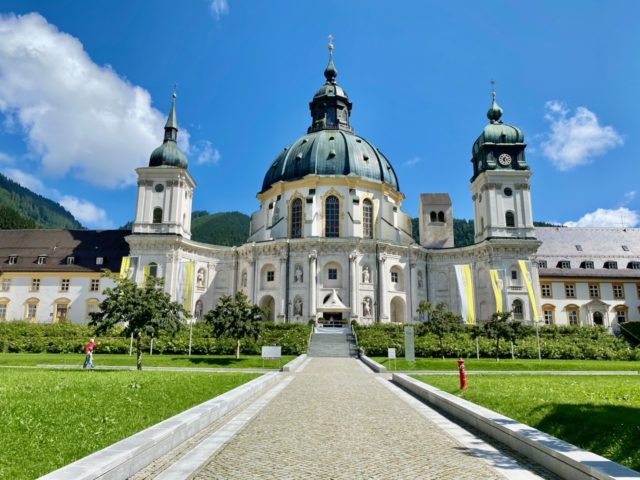
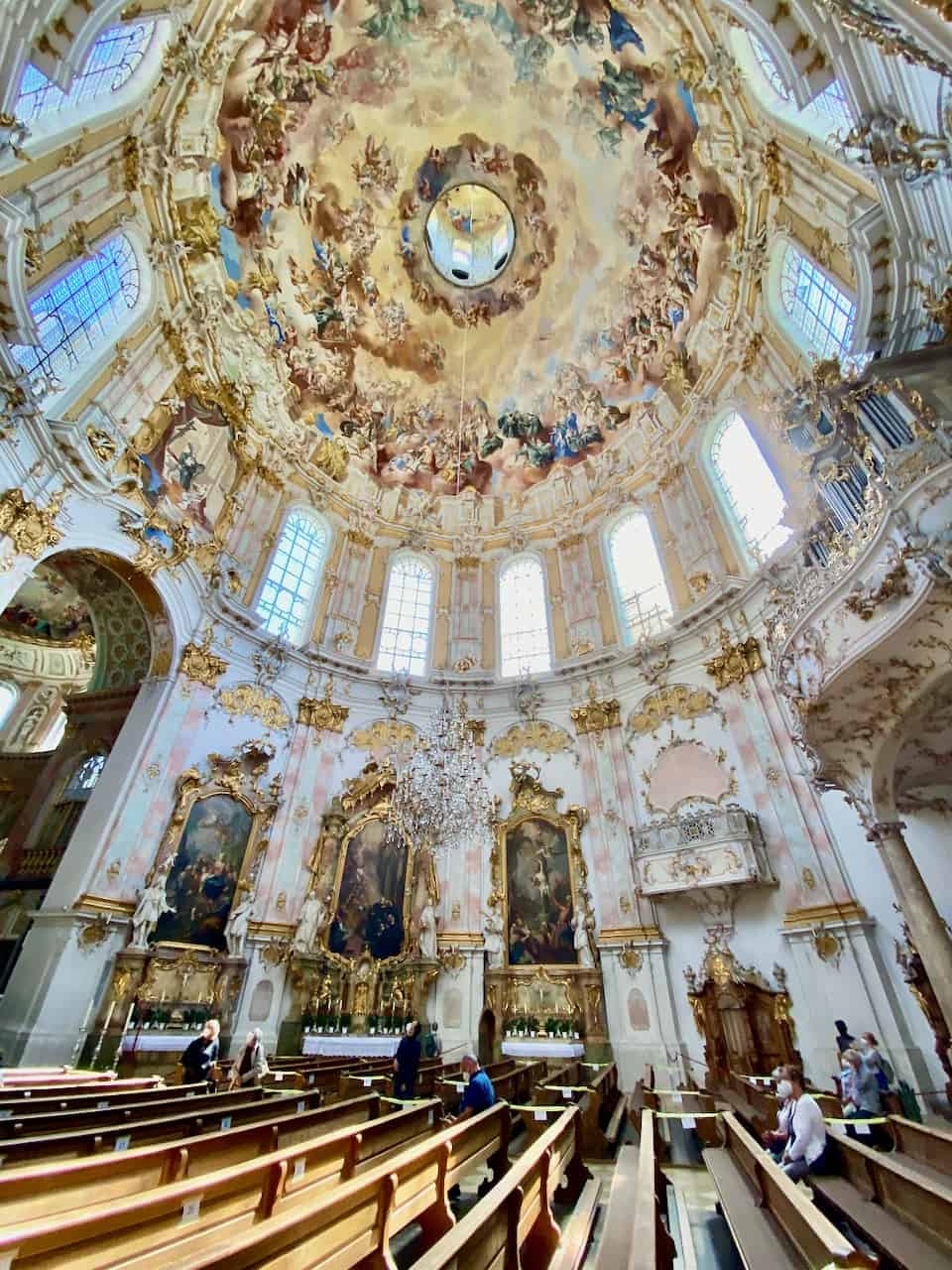
STOA 169
If you’re driving from Munich to Neuschwanstein/Linderhof, consider a stop in the village of Polling to visit the wondrous columns of STOA 169, a cool art project. Read more about STOA 169.
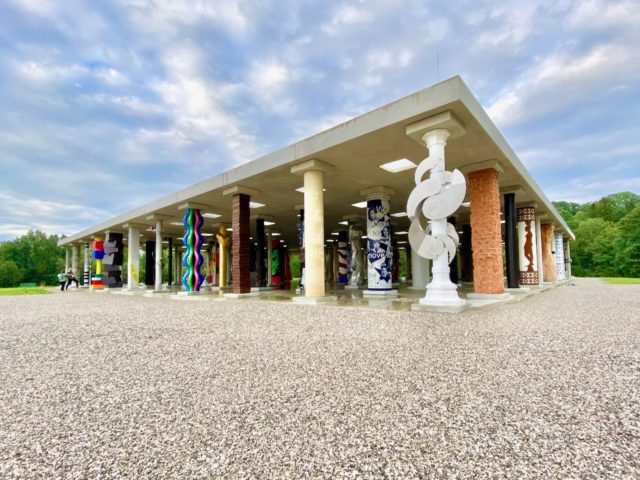
Read about a road trip along the Main River in northern Bavaria.
